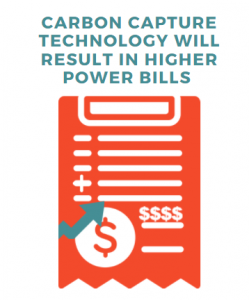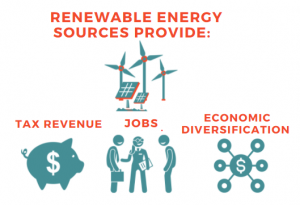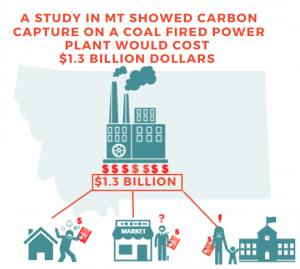Frequently Asked Questions
FAQ
Wyoming has some of the lowest electricity rates in the country for people and business. Local government, small businesses, hospitals, schools, community service organizations, seniors, and families all depend on low-cost power. However, our rates are at risk because Wyoming politicians want to subsidize old and inefficient coal-fired power plants with your power bill and otherwise keep these plants going at any cost. The Public Service Commission is considering new rules that will require carbon capture and storage technology at coal plants. It is important to raise your voice and let Wyoming elected officials and agencies know that you don’t want your power bill to go up to keep uneconomic electricity producing resources running. Sign up below and we will keep you informed about public comment opportunities before the Public Service Commission.

While coal mines and power plants provide revenue and jobs to Wyoming and local communities, new sources of energy can also provide revenue and jobs. Renewable energy, battery storage, natural gas, and other power options generate tax revenue and provide jobs for construction and ongoing operations and maintenance. Wyoming can transition to less polluting, less expensive energy sources while maintaining a high quality of life with low taxes. Our association is working to leverage federal funding, financial commitments from utilities, and other options to help our state, and the communities that have been dependent on Wyoming’s coal plants, transition our economy and workforce.

Study after study shows that new wind and solar energy is more affordable than existing coal plants. A coal plant with expensive carbon pollution controls is over five times more expensive than renewable energy sources. Nuclear energy is even more expensive than coal. For more information: https://www.lazard.com/perspective/levelized-cost-of-energy-and-levelized-cost-of-storage-2020/

There is no commercially viable coal-fired power plant using carbon capture in the United States. Carbon capture starts with capturing a portion of the carbon dioxide at a coal plant through pollution controls, similar to a scrubber for sulfur dioxide or other air pollution. Once the carbon dioxide is captured, it can then be piped to an oil field to “enhance” oil production; it can be used to create products or injected deep underground for geologic sequestration. While limited tests have been done, none of these types of “utilization” for carbon dioxide have been done large-scale from a coal plant. Carbon capture is billed as a way to reduce greenhouse gas emissions. Still, little analysis is available to determine whether carbon capture decreases the lifecycle carbon dioxide pollution that causes climate change.
There is only one coal plant in the country that captures carbon dioxide at a commercial scale and it shut down in 2020. The Petra Nova Carbon Capture project is located at a coal plant called the W.A. Parish Generating Station in Texas. Independent analysts have concluded that Petra Nova failed to perform as advertised and is now no longer operational. Other coal-fired carbon capture projects likely face a similar fate. For more information: https://ieefa.org/ieefa-u-s-mothballing-of-petra-nova-carbon-capture-project-shows-likely-fate-of-other-coal-fired-ccs-initiatives/
As discussed above, a coal plant with carbon capture is over five times more expensive than new wind and solar energy. A recent study commissioned by the Department of Energy found that carbon capture for the Colstrip power plant in Montana would be over $1.3 billion along with an annual operating cost of over $100 million. The only way carbon capture will ever be affordable for a utility company is with hundreds of millions of dollars in subsidies paid by ratepayers through power bills or taxpayers through government loans and grants. In either case, families, small businesses, and nonprofits will bear the costs.

One of the most common fallacies about renewable energy is that it cannot be relied upon to satisfy our electricity demand given that the sun does not always shine and the wind does not always blow. However, reliability is not a function of individual generation technologies, but a function of the electricity system as a whole. A modern electricity grid needs power systems that can match supply and demand in a more concerted and flexible way. Renewable power – by its very diversity and flexibility – is increasing the reliability, affordability and security of the power system, not diminishing it. Additionally, battery storage technologies are gaining use across the Western Interconnection and are fast becoming a cost-effective way to regulate energy production and distribution from renewable energy generation.
In a desperate attempt to save coal jobs and revenue, the Wyoming legislature passed a bill in 2020 to force utilities to install carbon capture technology. A bill passed in 2019 requires a utility to try and sell a coal plant before retiring it, interfering with what should be a decision of private business. Both of these bills, and other efforts, could lead to increasing electricity rates by keeping expensive and inefficient coal plants running while preventing utility investment in more affordable clean power options for customers.
An Integrated Resource Plan (IRP) is a document that lays out a utility’s plans for energy sources over a given period of time (most often 20 years). An IRP, and the complex modeling analysis that underlies its results, helps a utility make smart choices about how to make multimillion-dollar investments funded by your power bill. An IRP selects the “least cost, adjusted for risk” energy plan, identifying what types of new power plants to build, how much transmission will be needed to connect those power plants to provide reliable electricity, and whether to retire any current power plants. While an IRP does not determine the rates people pay for power, the document influences utility decisions that will ultimately determine how much customers pay for power. Wyoming’s largest utility, Rocky Mountain Power, files an IRP with the Public Service Commission every other year. For more information on Rocky Mountain Power’s IRP, visit https://www.pacificorp.com/energy/integrated resource-plan.html
Once a utility files an IRP with the Public Service Commission, there is a public comment period when utility customers can submit comments to state regulators. IRPs need to comply with the Public Service Commission’s guidelines, available at: https://psc.wyo.gov/electric/integrated-resource-plan Comments on the IRP can be about the types of power generation chosen by the utility, any problems in the utility’s analysis or conclusions, or any other part of the utility’s plan.
Here’s a guide that is also helpful: Participating in Power: How to Read and Respond to Integrated Resource Plans.
Our power comes from people like you and your neighbors. We hope you will join us in advocating for low-cost electricity before the Public Service Commission, the Wyoming Legislature, and our Governor. Our elected officials and utility-regulating agencies need to hear from you.
